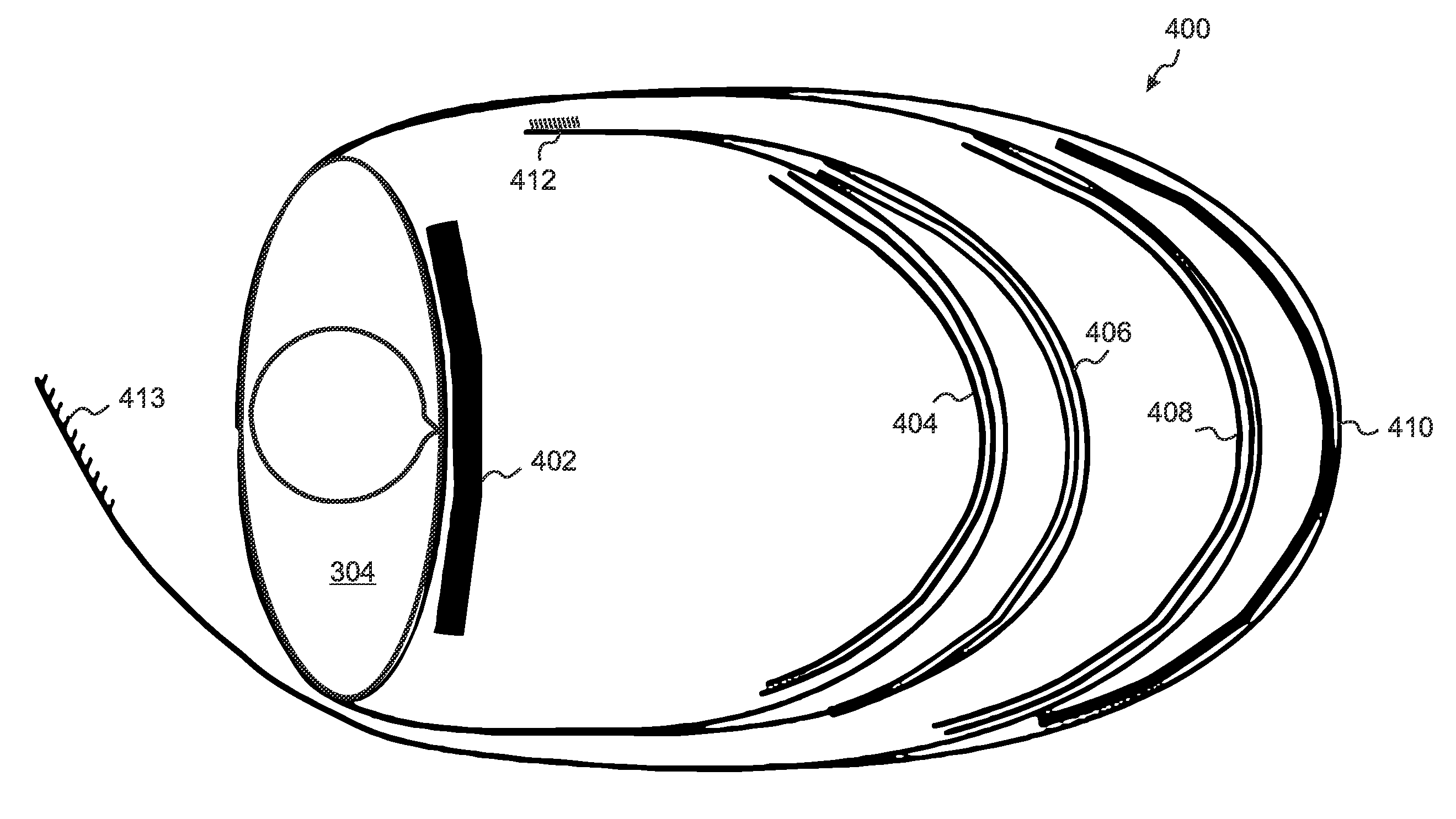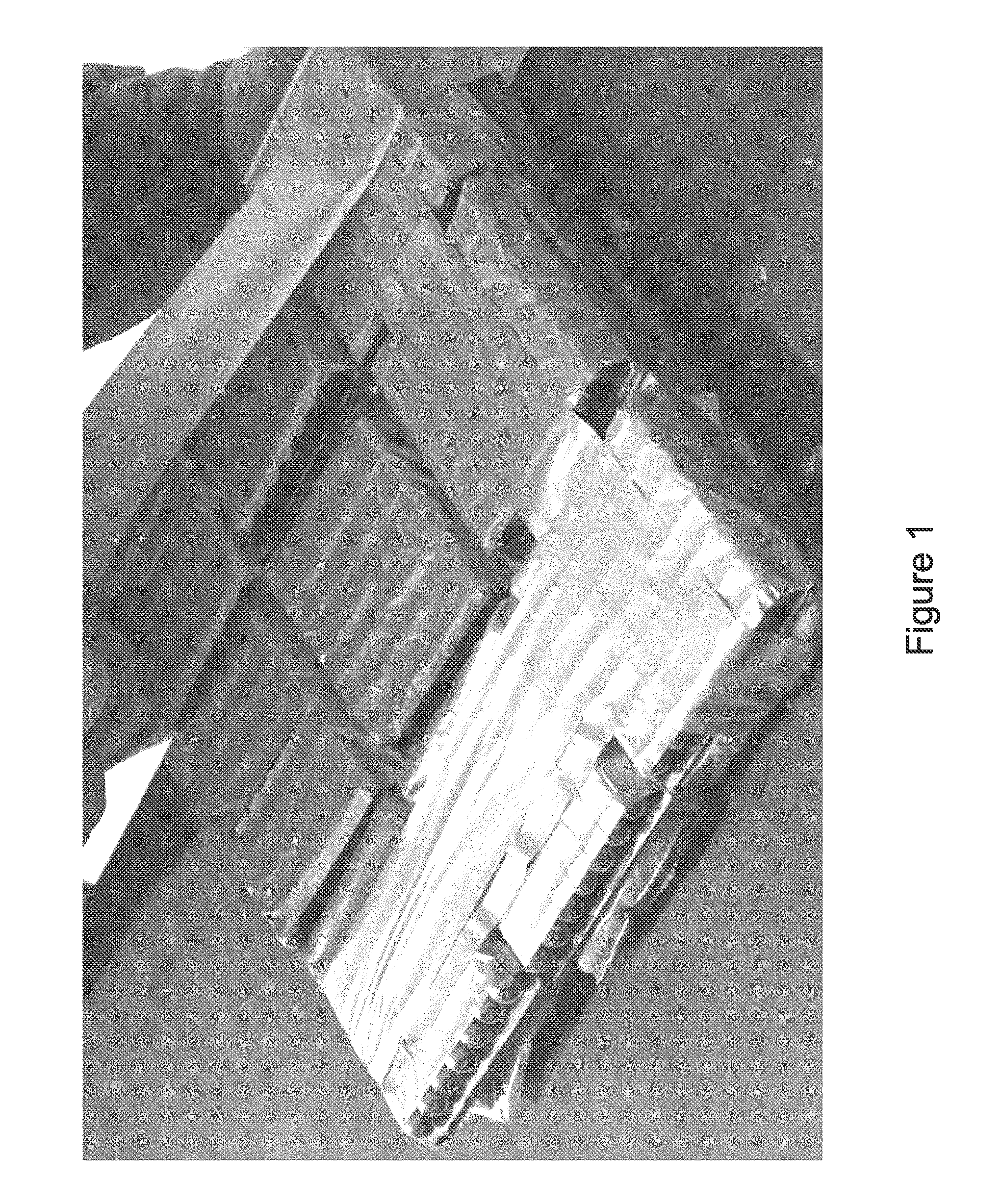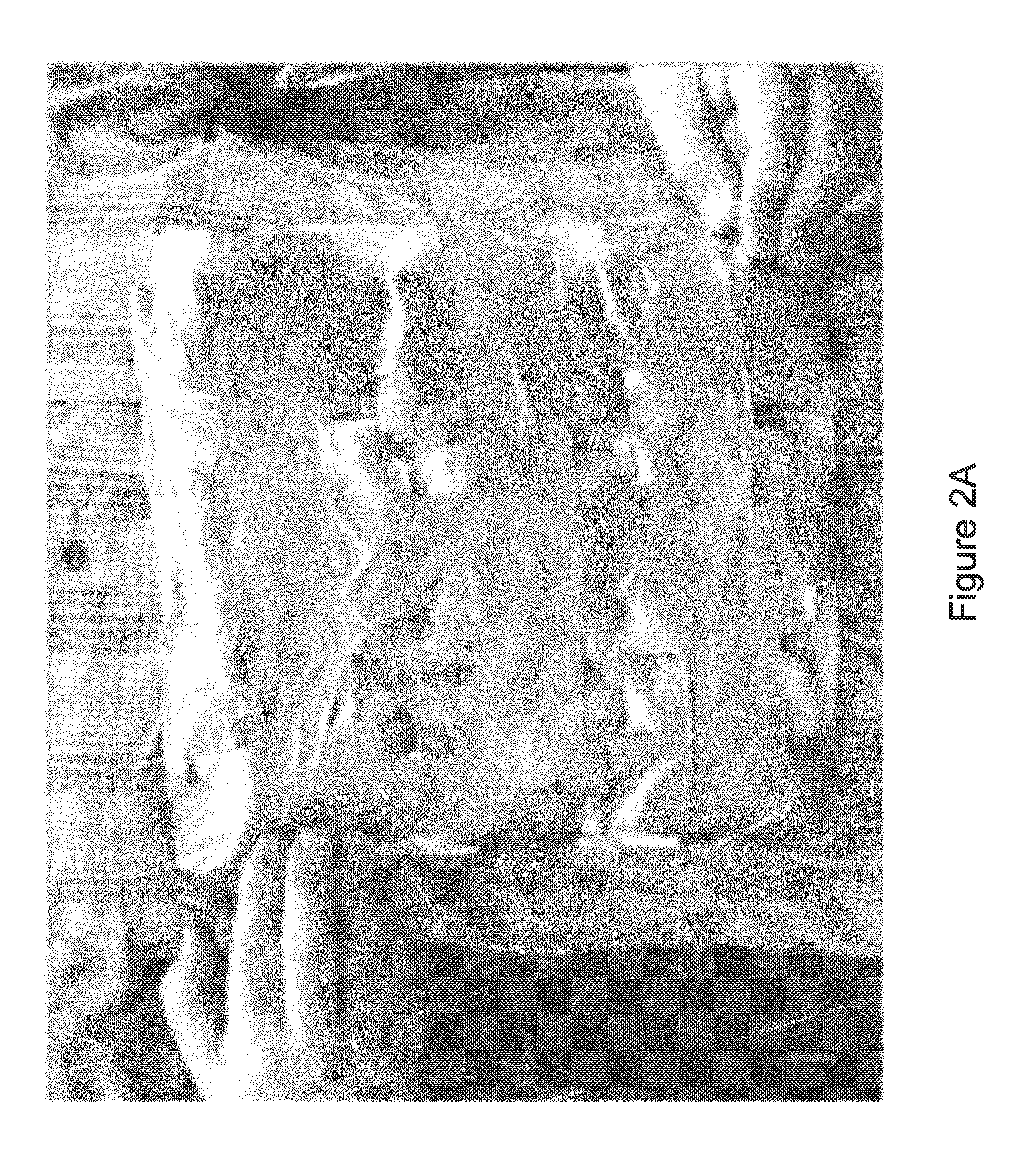Suicide bomber blast threat mitigation system
a technology of bomb threat and mitigation system, applied in the field of suicide bomber blast threat mitigation system, nonlethal weapons, can solve the problems of affecting the safety of personnel, presenting a unique threat to lives and property in the modern world, and causing special problems for police, military and other security and law enforcement personnel, so as to mitigate the damage and disable the suspect
- Summary
- Abstract
- Description
- Claims
- Application Information
AI Technical Summary
Benefits of technology
Problems solved by technology
Method used
Image
Examples
Embodiment Construction
[0040]With reference to FIG. 4A, the present invention is a blast shield 400 which can be initially contained within a canister or “sabot 302” and fired toward a suspected suicide bomber 304. Once fired, the blast shield 400 emerges from the sabot, opens in mid-flight, and at least a portion of the blast shield 400 is wrapped around the suspect 304 while a plurality of protective layers 404, 406, 408, 410 are positioned in front of a PB-IED 402 worn by the suicide bomber 304, thereby simultaneously disabling the suspect 304 and mitigating blast damage if the PB-IED 402 is detonated.
[0041]In the embodiment of FIGS. 4A and 4B, the blast shield 400 includes four protective layers 404, 406, 408, 410. Attachment mechanisms 412, 413 are provided at the ends of the shield 400, so that it will attach to itself and remain fastened to the suspect 304. In some embodiments, a weight is attached to the end of the shield that includes the inner two protective layers 404, 406, so that the center o...
PUM
 Login to View More
Login to View More Abstract
Description
Claims
Application Information
 Login to View More
Login to View More - R&D
- Intellectual Property
- Life Sciences
- Materials
- Tech Scout
- Unparalleled Data Quality
- Higher Quality Content
- 60% Fewer Hallucinations
Browse by: Latest US Patents, China's latest patents, Technical Efficacy Thesaurus, Application Domain, Technology Topic, Popular Technical Reports.
© 2025 PatSnap. All rights reserved.Legal|Privacy policy|Modern Slavery Act Transparency Statement|Sitemap|About US| Contact US: help@patsnap.com



